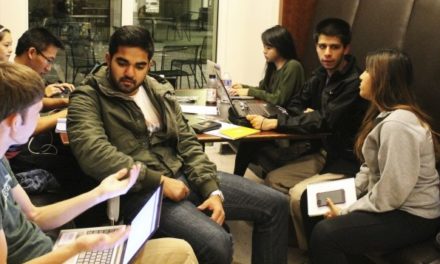Before the new Emory Student Center (ESC) finishes construction, the Wheel compiled a list of features students can expect to see in the building.
Gender-neutral Bathrooms
ESC will have gender-neutral bathrooms with more than one stall.
Kaldi’s Coffee
When the Dobbs University Center was torn down, the campus lost a central coffee location. When the ESC is up and running, students will once again be able to get their caffeine fix at Kaldi’s Coffee without trekking to Kaldi’s at the Depot or the Medical School.
Recreational Areas
The ESC will offer collaborative spaces to work, but students seeking reprieve and relaxation can also play on the foosball tables and gaming systems.
Energy Efficiency
The ESC will be the most energy efficient building on campus, Perlman said. The ESC’s renewable sources of energy will include geothermal and solar energy. About 25 to 38 percent of the energy used for heating and cooling the building will be sourced from 65 geothermal wells drilled into McDonough Field.
The roof will have 32 solar panels, which are projected to heat about 40 percent of the building’s potable water. The glass on the building’s south- and west-facing sides will capture solar heat in the winter, while trellises will shield the building from the summer sun, reducing dependence on artificial heating and cooling.
The building will also have a monitoring system to control lighting and temperature, which will minimize energy usage. The heating and lighting can be turned to an “unoccupied mode” when there is no one in an area.
Student Input
Perlman said student input has been key to every stage of the project. During the feasibility study, students were asked about issues with the old Dobbs University Center (DUC). Some of those concerns were addressed in the construction of the ESC. One such goal was to provide students and clubs with larger meeting spaces.
“For meetings with less than 30 people, there’s a lot of great classroom spaces available after hours that you can reserve … but there are not a lot of spaces available for between 30 and a 100 people that aren’t fixed-seat lecture halls,” Perlman said.
The new multipurpose hall seeks to provide such a space, having a maximum capacity of 1,400 and a dinner-style capacity of 800. The hall is considerably larger than Cox Ballroom, which has a maximum capacity of 400 to 500 people.
Perlman said that the larger capacity of the multipurpose hall might enable clubs to hold large events on campus.
“We know that students use hotel ballrooms around the city because they feel that Cox can’t hold their events. Part of this is about hoping that folks might consider coming back to campus to host their events,” Perlman said.
Perlman and his team also consulted students about furniture selection.
“We took a bunch of students in a shuttle out to a furniture showroom to kind of show them mock-ups … and help us sort of pick furniture that students will want to use,” Perlman said.
Correction (3/4/19 at 7 p.m.): A previous version of this article stated that the Emory Student Center would be the first building on-campus with multi-stall gender-neutral bathrooms. In fact, there are several multi-stall gender-neutral bathrooms on-campus already.
Tanika Deuskar (22C) is from Bangalore, India. She intends to double major in Biology and Creative Writing. She loves jogging, listening to podcasts, and eating spicy food.





